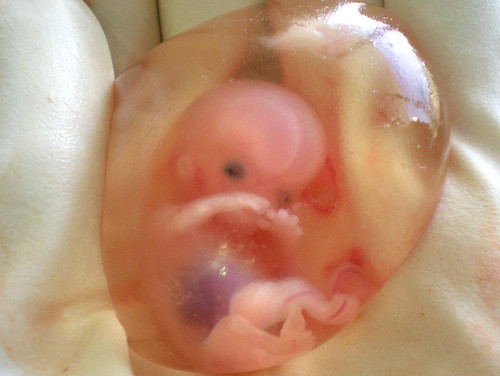We run our website the way we wished the whole internet worked: we provide high quality original content with no ads. We are funded solely by your direct support. Please consider supporting this project.
Did Jesus Have Two Minds?
As I laid out in the previous post, I believe Jesus is fully God and fully human. The question is: How is this possible? How do we talk about the way that Jesus was fully God and fully man?
The Creed of Chalcedon (451) tries to answer the question this way:
We, then, following the holy Fathers, all with one consent, teach men to confess one and the same Son, our Lord Jesus Christ, … truly God and truly man, … to be acknowledged in two natures, inconfusedly, unchangeably, indivisibly, inseparably; the distinction of natures being by no means taken away by the union, but rather the property of each nature being preserved, and concurring in one Person and one Subsistence, not parted or divided into two persons…
While the Creed defends against basic Christological heresies of the early Church, it actually does not answer our question. It just sets the boundaries that must be observed to avoid heresy. We must still make sense of the incarnation within these boundaries.
The way most theologians in the church tradition have done this, at least as it concerns the question of Jesus’ knowledge, is often called a “two minds Christology.” This view holds that Jesus walked the earth with both the all-knowing mind of God and the limited knowledge of a human being. And one could argue that the Bible supports this claim. Jesus occasionally demonstrated an omniscient awareness of people’s innermost thoughts and motives (Jn 2:24-25; Mt 9:4). He expressed a divine knowledge of Judas’ deceitful heart and future betrayal (Jn 13:18-19, 21-27), of Peter’s future denial (Lk 22L31-34) and the exact mode of his death (Jn 21:18-19), of a stranger who would open up his house to him and his disciples (Mk 14:12-16), and of a coin that would be found in a fish’s mouth (Mt 17:24-27). At the same time, as a full human being, Jesus often indicates that his knowledge was limited. So, this tradition concludes, Jesus somehow simultaneously possessed “two minds”: a divine omniscient mind and a human finite mind.
This view is not without its problems. To be honest, I have always had trouble rendering this view coherent. It requires us to imagine that Jesus was aware of what was happening with every molecule on every planet in the universe even while he was a zygote in the womb of Mary. And it requires that we imagine this while also affirming that, as a fully human zygote, Jesus was completely devoid of any awareness. Is this a legitimate paradox or an unacceptable contradiction? One could easily argue the latter. If being God means that one is omniscient and that being human means that one is not omniscient, then it seems we are asserting A and not A in claiming Jesus was both. We could argue along the same lines regarding God’s omnipresence and omnipotence. And if this is true, then in asserting that Jesus was a single person who was fully God (and thus fully omniscient) and full human (and thus not fully omniscient), we are asserting nothing, just as when we say “married bachelor” or “round triangle.”
There is an alternative way of talking about how Jesus was fully God and fully human, however. It has been labeled the “kenotic Christology,” based on the word kenosis, which is Greek for “to empty.” More specifically, it is based on Philippians 2:7. In my next post, I’ll begin with a discussion of this passage.
If you want to read a basic introduction to the Classical view of the Incarnation, I recommend G. Boyd, P. Eddy, Across the Spectrum, (Grand Rapids, MI: Baker Academic, 2009), 111.
Category: Essays
Tags: Essay, God, Incarnation, Jesus, Kenosis, Omniscience, The Mind
Topics: Christology
Related Reading

The Violent “Church Triumphant”
In light of how central enemy-loving non-violence is to Jesus’ teaching and to his cross-centered revelation of God, we have to wonder why the church has refused to listen to its head and instead condoned violence, as pointed out in the previous post? Christian theologians have used OT’s violent portraits of God, at least since…

What makes the claim that Jesus rose from the dead unique?
Question: What makes the story of Jesus’ resurrection different from other pagan resurrection stories, such as those surrounding the Egyptian god Osiris? Answer: In Lord or Legend? (and more academically, The Jesus Legend), Paul Eddy and I address this, and many other, objections to faith in Jesus. I encourage you to check either of these…

Does Prayer Really Change Things?
Many people operate out of a blueprint model where God is viewed as absolutely unchanging, and all that occurs in the world is the unfolding of an eternal divine plan. If this is the case, then the purpose of prayer is to change us, not to change things. While prayer does change us, the Bible…

What “God Loves You” Actually Means
From the beginning, God chose to have a people who would be the object of his eternal love, just as Christ is the object of his eternal love. God sought to acquire a “bride” for Christ who would receive and reflect the love of the triune community (Eph 5:25-32). And the only qualification for being…

A Coming Storm
There is a storm beginning to brew on the horizon. It is a debate among Evangelicals about the violent depictions of God, stirred up largely by Eric Seibert’s Disturbing Divine Behavior. Here is a post that sounds “the clarion call.” The debate is presently around two options. Option #1: Traditionalists argue we must simply embrace…

The Warfare We Have Inherited
Image by Chris Sardegna Jesus’ miracles over nature, as well as his healings, exorcisms and especially his resurrection, were definite acts of war that accomplished and demonstrated his victory over Satan. These acts routed demonic forces and thereby established the kingdom of God in people’s lives and in nature. But their primary significance was eschatological. People…

